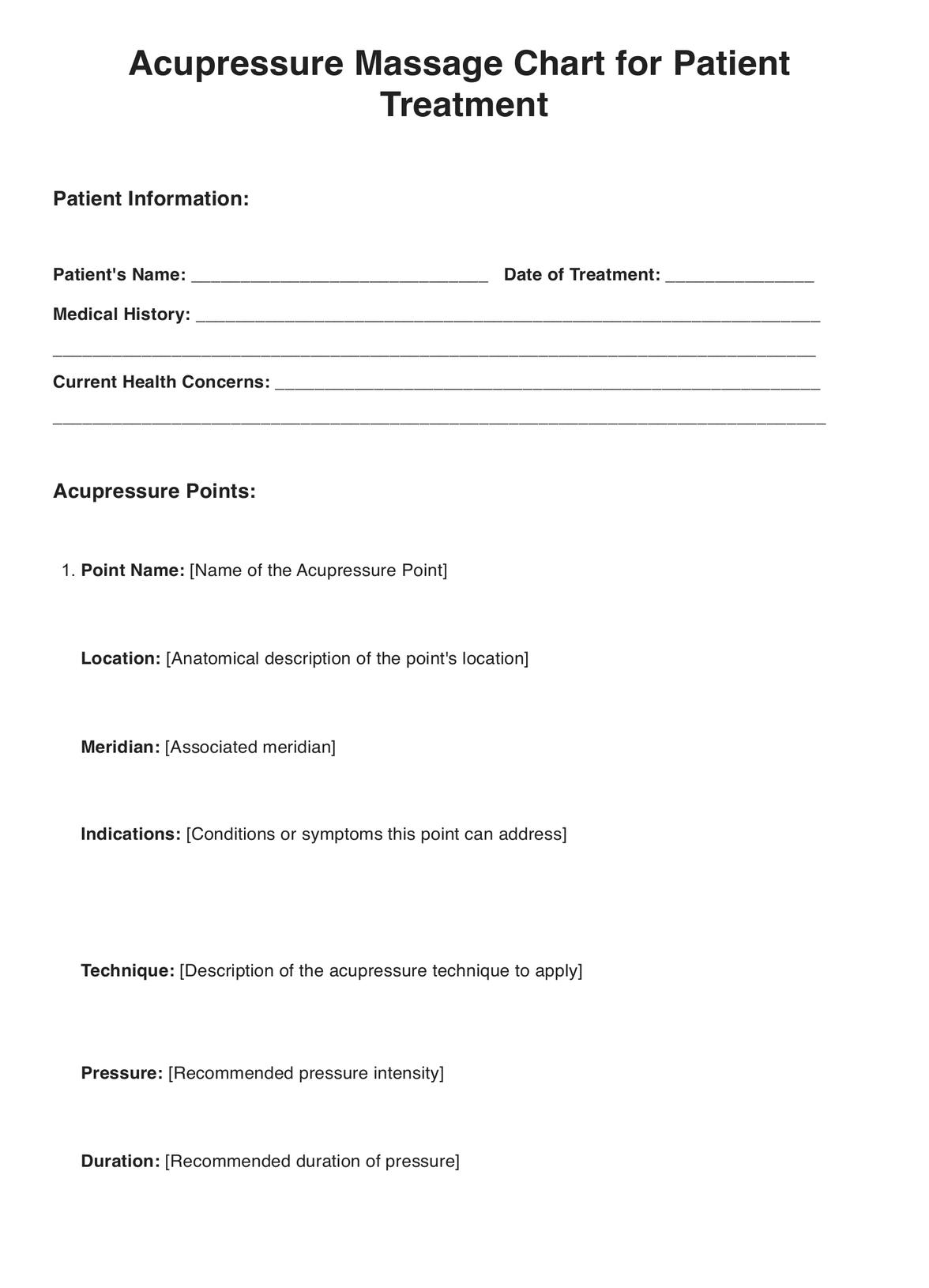Yes, acupressure can be practiced for self-care. Acupressure massage points charts can guide you in applying techniques to relieve minor discomfort, stress, or tension. However, seeking guidance from a trained practitioner is recommended for specific health concerns.

Acupressure Massage Points Charts
Enhance well-being with informative Acupressure Massage Points Charts, guiding effective acupressure techniques for holistic health.
Acupressure Massage Points Charts Template
Commonly asked questions
Acupressure is generally considered safe when practiced correctly. However, certain points should be avoided during pregnancy or specific medical conditions. It's advisable to consult a healthcare professional before starting acupressure therapy.
Acupressure massage point charts provide clear illustrations and descriptions to help you locate points accurately. Practitioners or online resources can guide you in finding and stimulating the correct facts.
EHR and practice management software
Get started for free
*No credit card required
Free
$0/usd
Unlimited clients
Telehealth
1GB of storage
Client portal text
Automated billing and online payments











